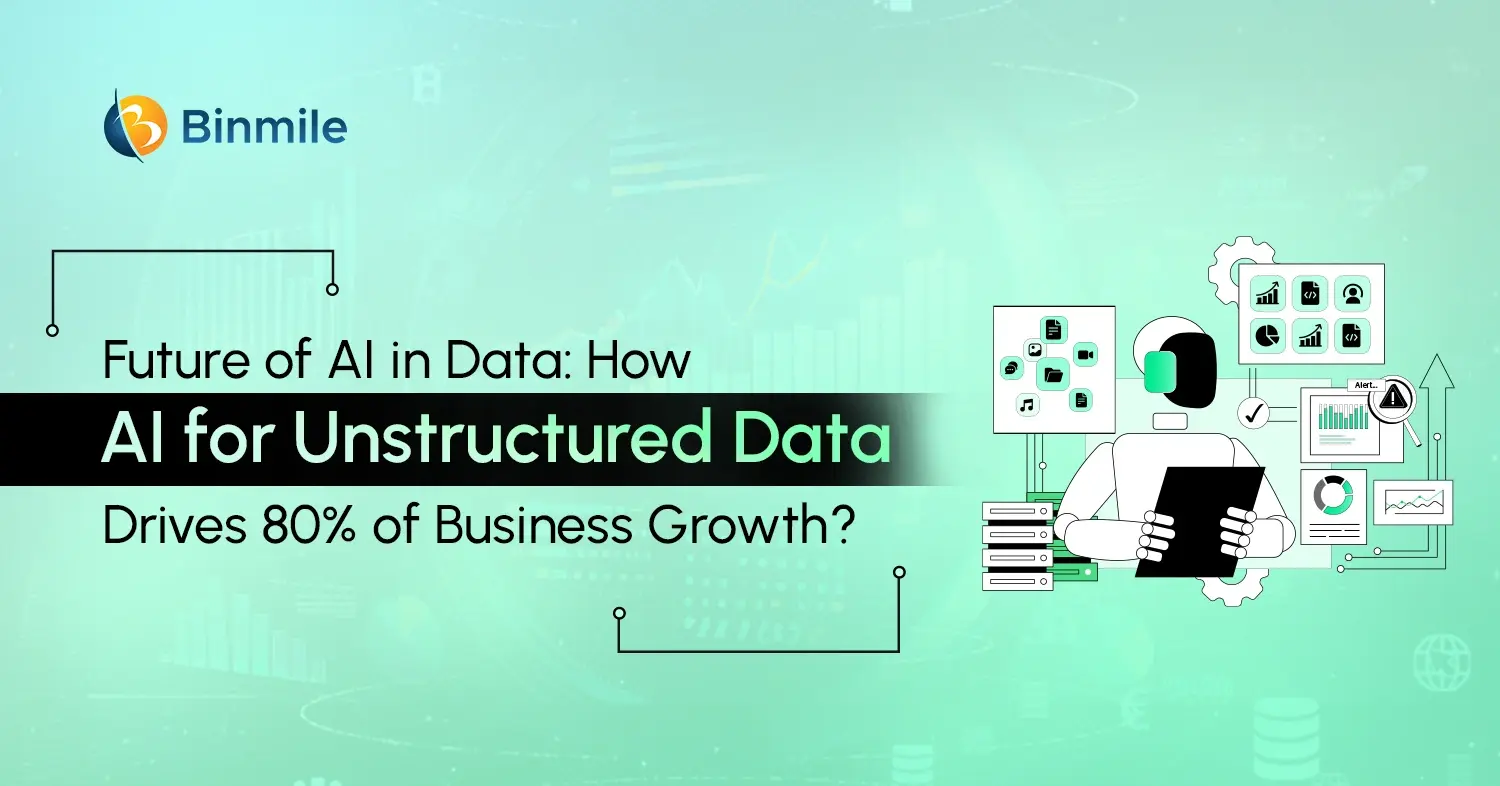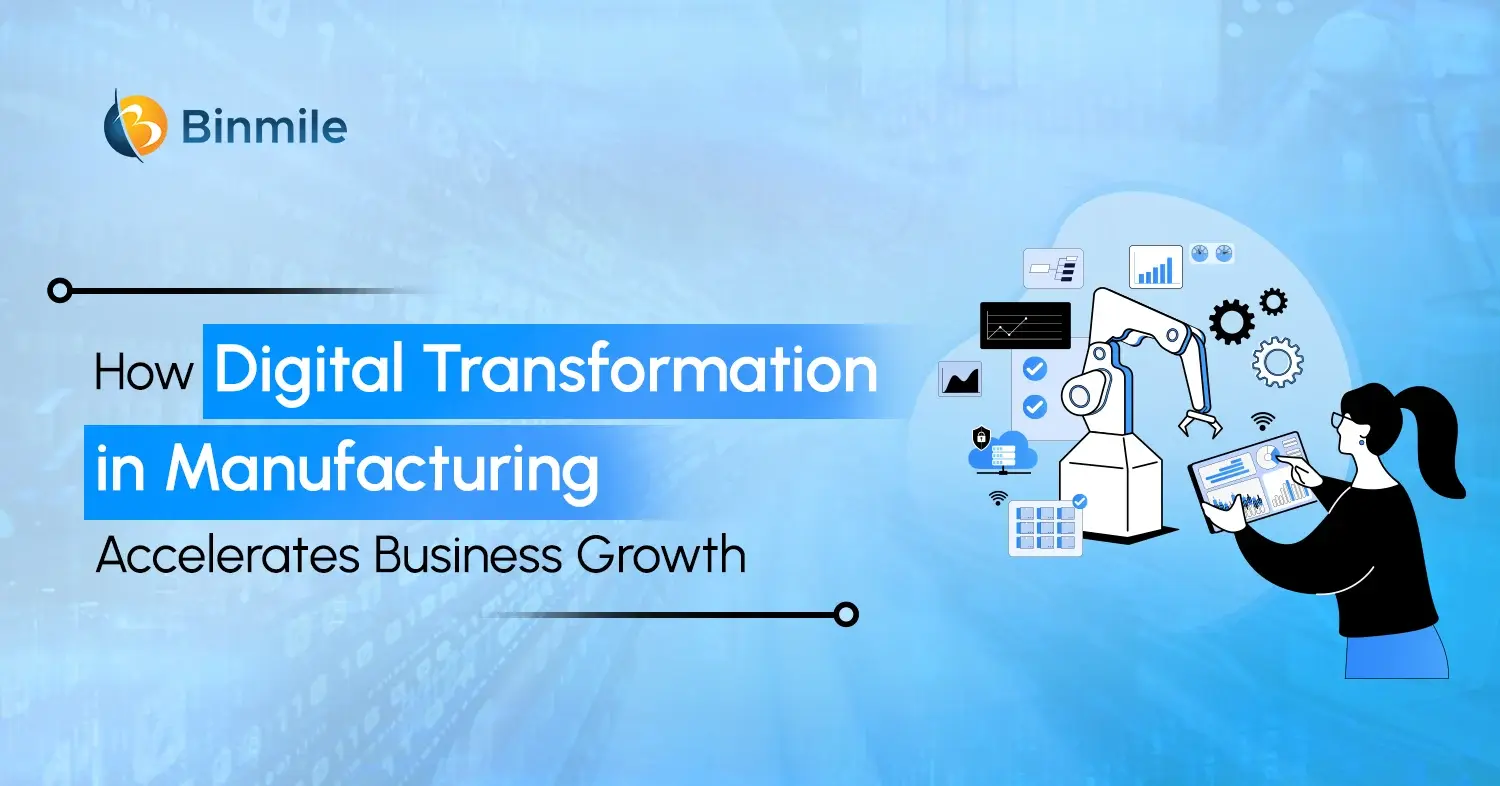Data is the foundation of every modern enterprise. Yet, a surprising fact stands out: nearly 80% of the world’s data is unstructured. Unlike neatly organised databases, unstructured data doesn’t fit into rows or columns. It’s found in customer reviews, support chats, videos, emails, and even social media posts.
What is unstructured data? Unstructured data is the raw, human-driven information that captures emotion, opinion, and behaviour. But because it’s scattered and unformatted, traditional tools can’t process it effectively. That’s where AI for unstructured data becomes a game-changer. Artificial intelligence can read, understand, and interpret this data, transforming it into valuable insights that drive real business growth. Whether it’s understanding customer sentiment, detecting fraud, or predicting future behaviour, AI is reshaping how organisations handle data altogether.
This blog mentions how AI for unstructured data can transform raw data into business intelligence. Using AI to sort unstructured data enables organisations to make better decisions, improve customer support and manage data more effectively.
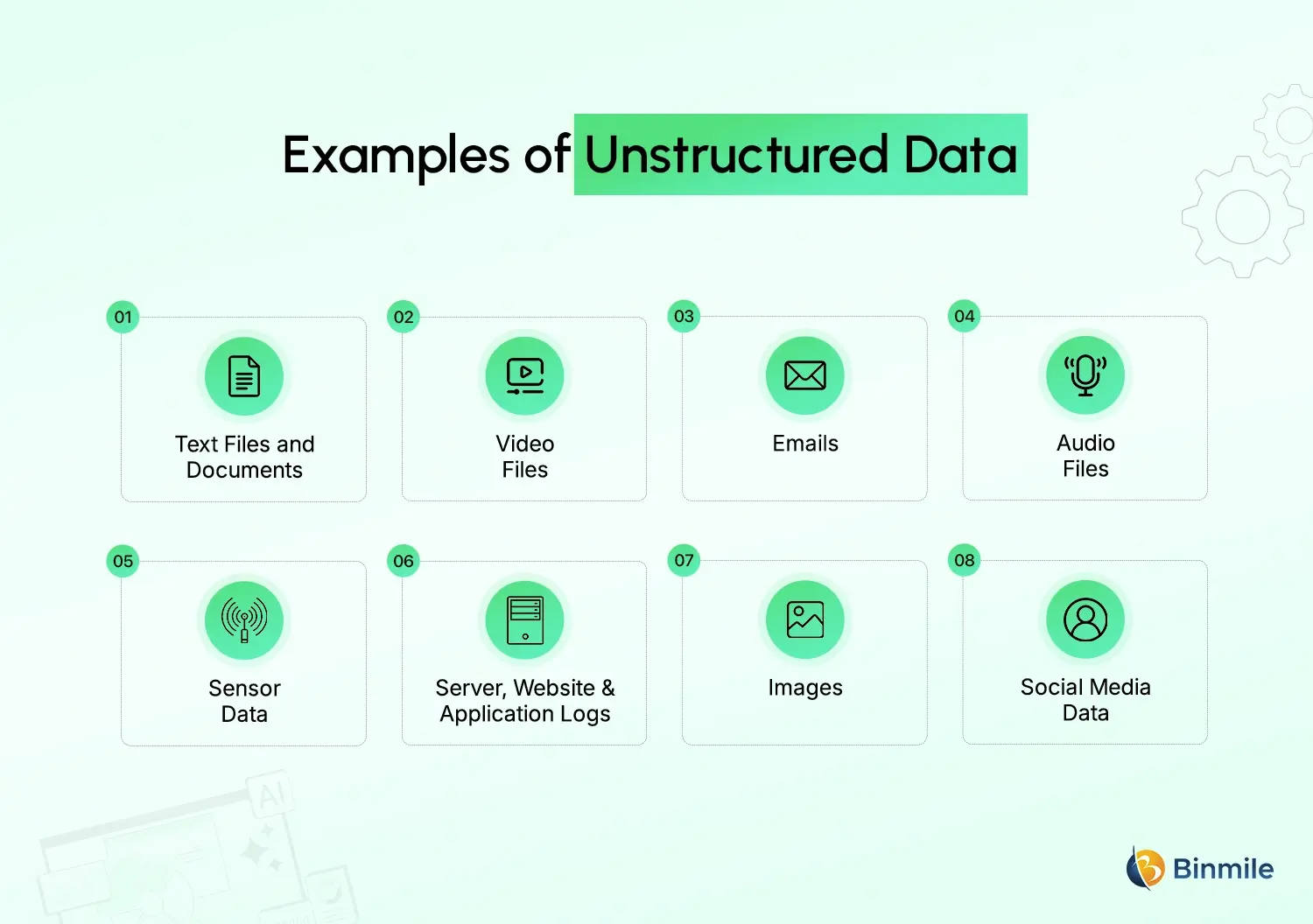
How AI For Unstructured Data Transforms Business Intelligence
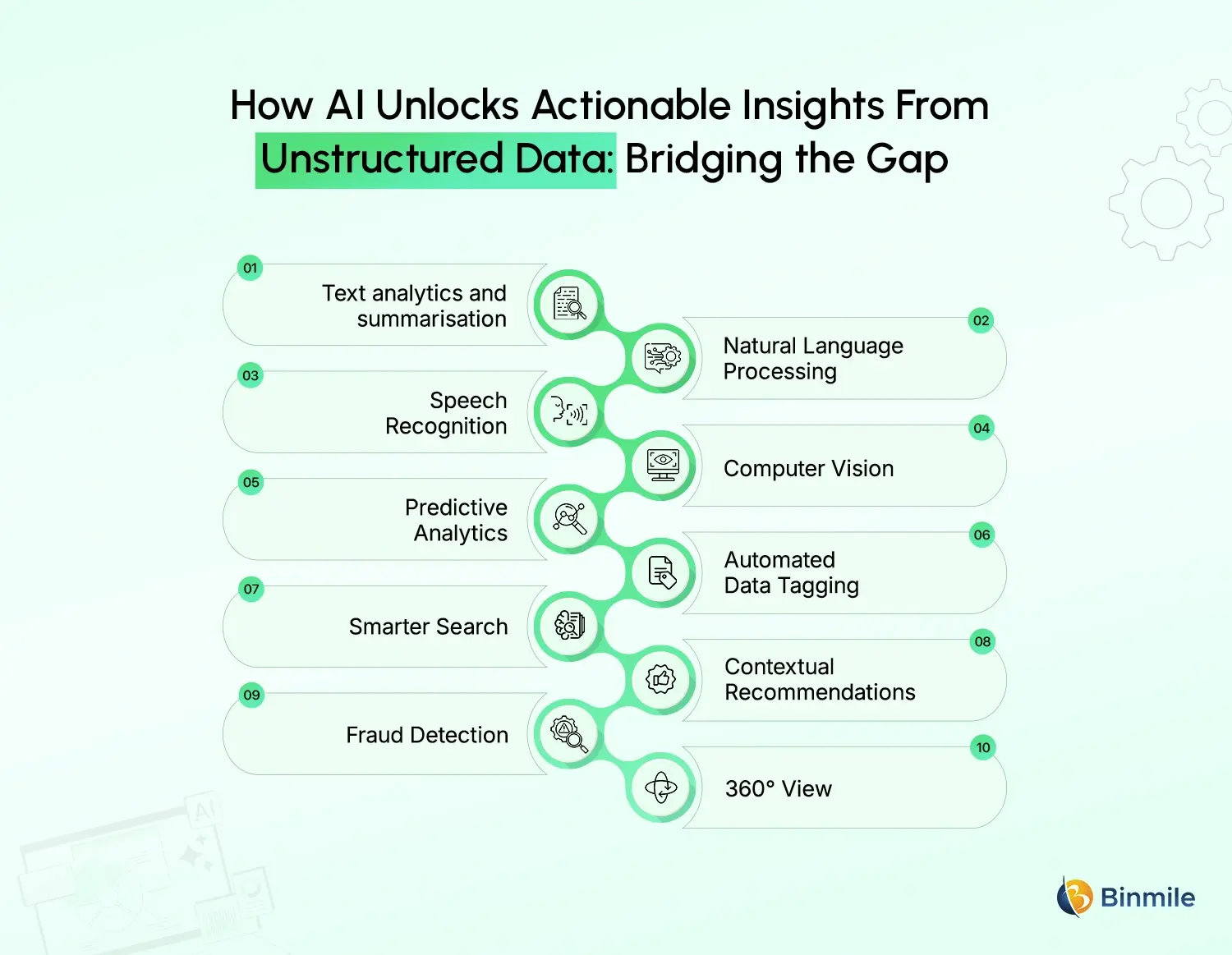
Unstructured data holds untapped potential, and AI can unlock it. Through the convergence of machine learning, natural language processing (NLP), and computer vision, companies can turn messy data into something valuable and make data-driven decisions. Here’s how it works:
-
Text analytics and summarisation
AI can identify and illustrate key themes in thousands of customer reviews, emails, or feedback forms. It generates concise summaries from long documents, saving executives time and highlighting key information. Moreover, performs real-time text analytics, helping companies understand customers’ wants and needs, what they dislike, and what they expect.
-
NLP: Estimating the Value of Human Context
NLP enables higher-order functions in AI systems to extract the meaning and sentiments underlying language expressions. This powers smart chatbots and sentiment analytics tools, along with digital assistants, to understand tone and intent, thereby contextualising data dynamically. AI and NLP systems are now analysing data to extract insights that traditional business intelligence tools miss.
-
Speech Recognition: Understanding Audio Data
Businesses gather enormous amounts of audio data, capturing calls and voice commands. Speech recognition AI transcribes audio data into text. This enables companies to perform analysis on customer calls and intervals for potential gaps in services. Converting unstructured audio data into actionable insights, helping companies boost efficiency, enhance customer service, and make data-driven decisions. By moving beyond simple transcription, AI can analyse conversational audio for sentiment, intent, and key topics to reveal information that would otherwise remain hidden.
Transform raw information into real business insights with our AI Development and Data Analytics Services.
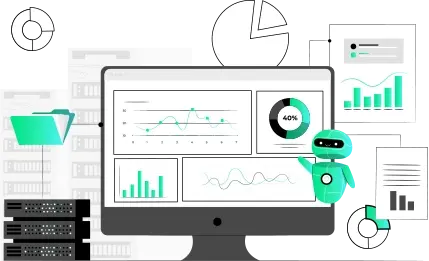
-
Computer Vision: Reading The Visual World
AI’s visual data processing abilities analyse images and videos, identifying objects, faces, emotions, and patterns. It is used for security surveillance and for quality assurance in the manufacturing industry. This technology converts visual data quality in AI into measurable data. Furthermore, in e-commerce, AI visual intelligence can analyse product images and customer browsing habits to provide personalised recommendations, enhancing the online shopping experience.
-
Predictive Analytics: Anticipating The Future
AI for unstructured data analysis helps in predicting trends, customer behaviour, and shifts in the market. This is used in analysing data from social media to help brands identify the potential risks to their reputation and demand. Instead of just reporting what happened, AI-driven predictive data analytics anticipates future events, allowing businesses to act in advance.
-
Automated Data Tagging: Organising the Disorder
AI facilitates the automatic organisation and classification of unstructured data. This is like sorting thousands of customer messages or a collection of images into predefined groups. It enhances the accessibility of valuable data automation and saves time. Traditional methods of analysing data usually fail to capture the context of the unstructured content. However, the infusion of AI tagging allows for semantic and concept-based searches that understand user intent, providing more relevant results from within the documents, images and other unstructured formats.
-
Smarter Search: Understanding Meaning
AI-powered semantic search goes beyond the traditional search approaches, which rely on keywords. It understands the context and meaning of a search query. For example, a search for “positive feedback” would return documents containing sentiments of praise, even if the phrase was absent. This is made possible as AI models are trained on massive datasets and enabling them to recognise patterns, contexts and meanings. Therefore, they can distinguish the nuance of a customer’s tone from a text-based complaint to gauge their true satisfaction.
-
Contextual Recommendations: Making Experiences Personal
Using AI to analyse unstructured behaviour data, such as browsing history, feedback, and interactions, enables highly individualised recommendations. This is how streaming services and online shops provide seemingly custom-tailored experiences to their clients. An AI analyses a customer’s chat history to detect a frustrated tone and quickly offers a relevant solution or escalates the call to a human agent.
-
Fraud Detection and Risk Management
AI detects fraudulent behaviour in finance by analysing unstructured datasets, such as emails, chat logs, and transaction notes. Unstructured data often has unrecognised early warning signs that structured systems, poorly designed to monitor, would miss completely. AI algorithms analyse transaction data in milliseconds to flag suspicious activity that deviates from normal patterns, such as a customer suddenly making large transactions to any overseas accounts. Further, instead of manual review, AI automatically blocks transactions, triggers a warning and alerts human analysts.
-
360° View: Combining Structured and Unstructured Data
The greatest potential comes from leveraging both types of data. AI helps organisations understand the reasons behind their performance changes by correlating structured data, such as sales figures, to unstructured data like customer feedback, rather than only showing what changed. This analyses provide a more accurate and comprehensive insight into customer behaviour, market trends and operational efficiency than any single data type alone can.
These use cases demonstrate that AI moves beyond data processing to full comprehension. Companies employing AI in their analytics moves the business needle from metric obsession to human-centred insight that facilitates more informed strategies and accelerated decisions.
The Future of Data: From Complexity to Clarity
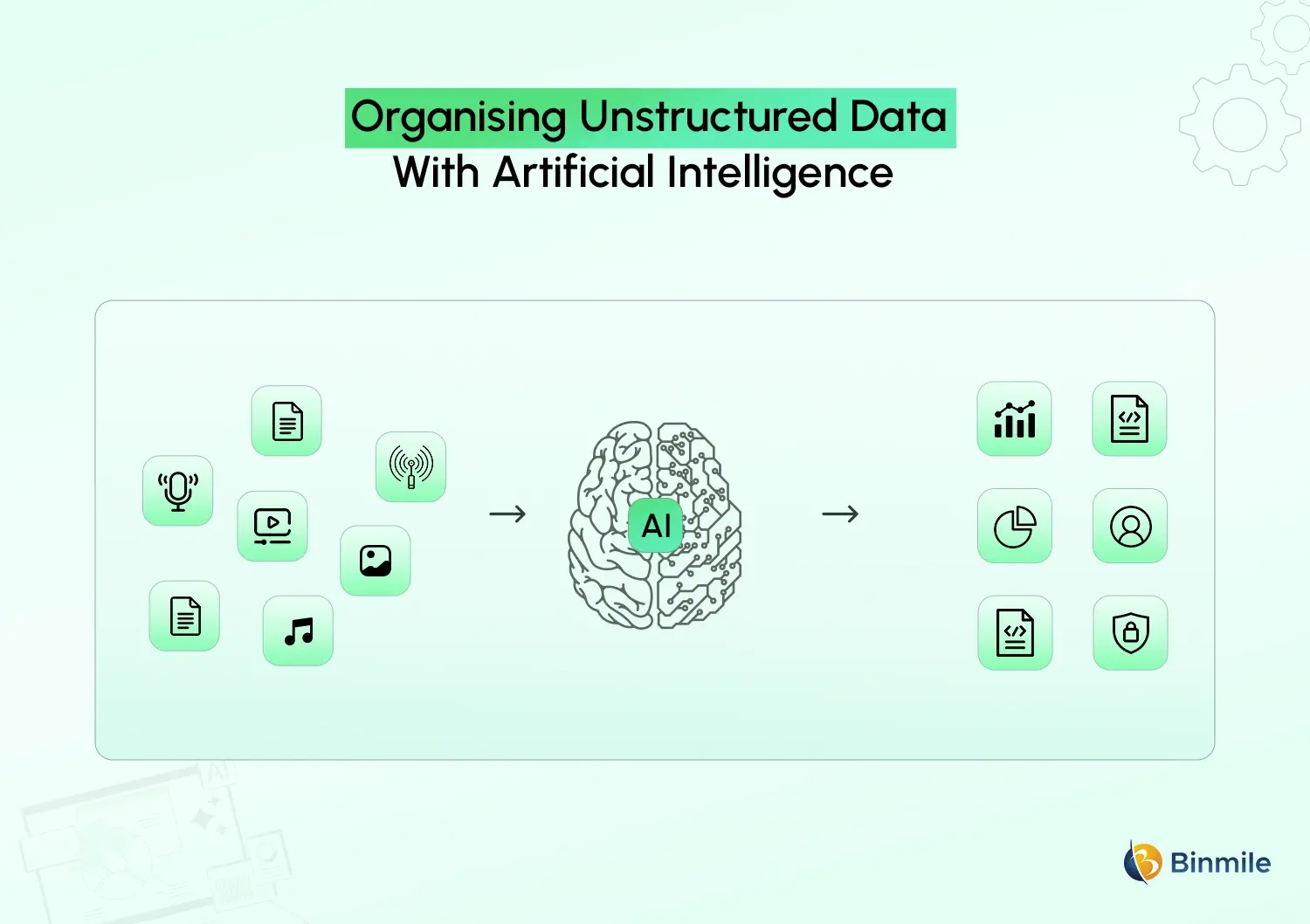
The evolution of data management is clear; it’s no longer about how much data you collect but how intelligently you use it. As data management tools, predictive use AI in data analytics, and AI development services evolve, companies are learning to manage data that feels less like numbers and more like narratives.
Using modern infrastructure, AI and automation and advanced analytics, it is becoming easier to turn raw, messy and unstructured data into actionable insights. This complexity-to-clarity approach benefits by enabling leaders to make timely decisions based on the most current data, rather than waiting for periodic summaries. Streamlining the data reduces costs and increases operational efficiency. Moreover, it allows organisations to understand a customer better, which ultimately facilitates targeted marketing and a personalised experience.
The future of AI lies in context-aware systems that think, learn, and decide like humans. And unstructured data is the bridge to that future.
Collaborate with our Data Engineering Experts to harness unstructured data and drive smarter decisions.

Conclusion
Unstructured data is the world’s largest source of untapped intelligence, and AI is the only technology capable of decoding it. From smarter predictions to personalised engagement, the insights hidden in unstructured data can define the future of every business. At Binmile, we help businesses make this transition through tailored data analytics services and data engineering consulting. Our solutions help enterprises extract, process, and interpret unstructured data efficiently, turning information overload into structured intelligence.
With AI for unstructured data, organisations can move beyond data collection to data comprehension, transforming raw information into real growth.
